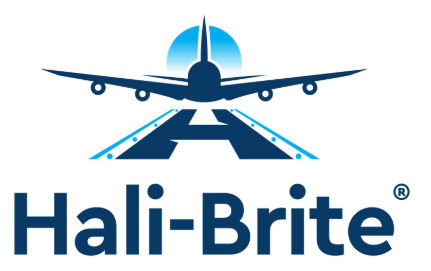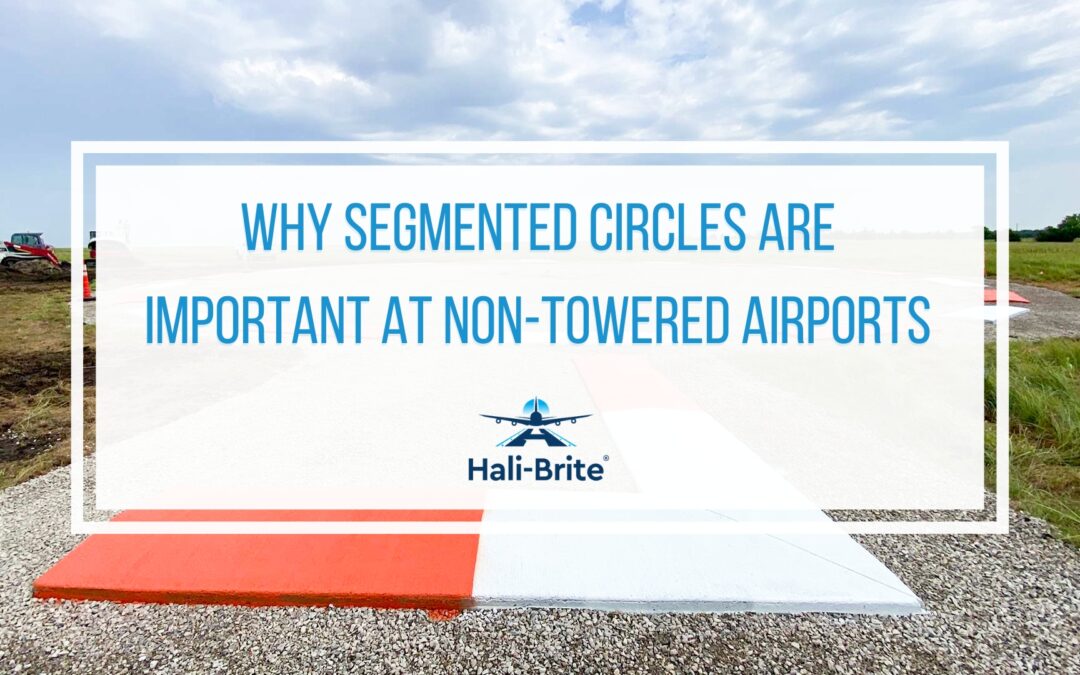A segmented circle is a visual aid used at non-towered airports to help pilots understand the traffic patterns from above. Since non-towered airports don’t have air traffic controllers guiding flight operations, the segmented circle provides essential information during takeoffs and landings. Let’s explore how the segmented circle works and why it’s important for safety at non-towered airports.
- Enhancing Safety and Communication in Non-Towered Airports
- Understanding the Components: Wind Indicators, Landing Direction, and Traffic Patterns
- Cost-Effective Air Traffic Control Solution
- Regulatory Requirements and Best Practices for Installation
- Get the Best Segmented Circle in the Market at Hali-Brite
Enhancing Safety and Communication in Non-Towered Airports
At airports with air traffic control towers, controllers provide pilots with clear instructions on when and where to land, take off, or taxi to manage traffic flow. Direct communication ensures that everyone in the airspace is aware of each other’s movements, ensuring smooth and safe operations.
Non-towered airports, however, operate differently. Without the guidance of controllers, pilots rely on visual cues to figure out the traffic pattern. The segmented circle, along with the wind indicators and other symbols, helps pilots determine the correct flight path to follow.
Furthermore, the segmented circle minimizes the risk of mid-air collisions and runway incursions. When everyone follows the same visual guidelines, it creates a more predictable and organized flow of traffic, even without direct instructions from a control tower.
Understanding the Components: Wind Indicators, Landing Direction, and Traffic Patterns
The segmented circle is made up of several important components, each serving a specific role in helping pilots make safe and informed decisions during takeoff and landing. Let’s take a closer look at what makes up a segmented circle.
Wind Direction Indicators
Wind direction indicators are the most noticeable parts of the segmented circle. A wind cone or a tetrahedron is often positioned at the center, both of which help pilots assess wind conditions.
-
- Wind Cone
The wind cone, also known as windsock, rises and points in the direction the wind is blowing from, providing a clear visual of both wind speed and direction. Since takeoffs and landings are generally done against the wind for better control, knowing the accurate wind information ensures pilots perform the safest and most stable approach.
-
- Tetrahedrons
Tetrahedrons, though less common, offer wind direction information and can indicate the ideal takeoff and landing direction. However, in modern aviation, pilots tend to rely more on the wind cone for accurate wind readings, especially in the absence of a control tower.
Landing Strip Indicators
The segmented circle includes L-shaped markings around its perimeter. The long leg of the L is the landing strip indicator, which helps pilots align the aircraft with the correct runway for landing, providing a reference point for setting up the right approach path and descent angle.
Traffic Pattern Indicators
The short leg of the L serves as the traffic pattern indicator. It shows the direction of the traffic pattern the pilots must follow, whether it’s a left-hand or right-hand traffic pattern, which helps manage the flow of aircraft around the airfield and prevent conflicts in the air.
Each component of the segmented circle must be reliable and of high quality to ensure accurate information. Our HB-5340 Segmented Circle, for example, is designed to meet the rigorous demands of airfield environments. FAA-compliant and AIP-qualified, it guarantees long-lasting performance with its durable, powder-coated aluminum construction that withstands even the harshest weather conditions.
Pair that with our L-806 or L-807 Wind Cone to have a complete segmented circle setup that’s built to last. Our wind cones feature durable powder-coated international orange finishes and optional marine treatment for corrosive environments. Rain caps protect the bearings from the elements, while the nylon sock is treated to resist rot, mildew, and water damage.
Cost-Effective Air Traffic Control Solution
For smaller airports that don’t have the budget for full-time air traffic control towers or automated systems, a segmented circle offers an affordable and reliable way to manage air traffic safely. Unlike control towers, which require personnel and ongoing maintenance costs, a segmented circle is a one-time investment that provides continuous guidance to pilots without the need for human oversight. It’s an efficient way to keep pilots informed and organized.
Regulatory Requirements and Best Practices for Installation
The Federal Aviation Administration (FAA) has provided specific guidelines for the installation and maintenance of segmented circles. These regulations ensure consistency and effectiveness across all non-towered airports in the US. Here’s a simplified rundown of the key requirements:
-
- Placement
The segmented circle should be located off the traffic area and be highly visible to pilots both in the air and on the ground.
-
- Wind Direction Indicators
The wind direction indicator should be installed at the center of the circle to provide real-time wind direction information.
-
- Landing Direction Indicators
If necessary, landing direction indicators may be installed to show the preferred direction for landing and takeoff.
-
- Traffic Pattern Indicators
For an airport that uses a right-hand traffic pattern, these indicators should be installed to notify pilots of the change.
-
- Closed Field Signal
If the airport is closed, panels should be placed in the center of the circle to form a cross, indicating that the airport is unavailable for landing.
For optimal safety, regular maintenance is necessary. The segmented circle and its components should be inspected frequently to ensure such airport visual aids are in good condition and clearly visible. Weather conditions and time can wear down these markers, so repainting, repairs, and replacement should be performed as needed.
Get the Best Segmented Circle in the Market at Hali-Brite
When it comes to safety at your non-towered airport, don’t compromise. Invest in a high-quality segmented circle that can provide clear guidance and enhance traffic flow for years to come. Hali-Brite offers a top-of-the-line segmented circle, including a wide range of wind cones, designed to meet FAA regulations and exceed industry standards.
Our HB-5340 ensures long-lasting performance, with durable construction and high-visibility markings. Whether you need a standard wind cone, a lighted one for increased visibility at night, or a solar-powered option for sustainability, we’ve got you covered. Contact us at (218) 454-095 or here to learn more and equip your airport with the best visual aids in the industry!


